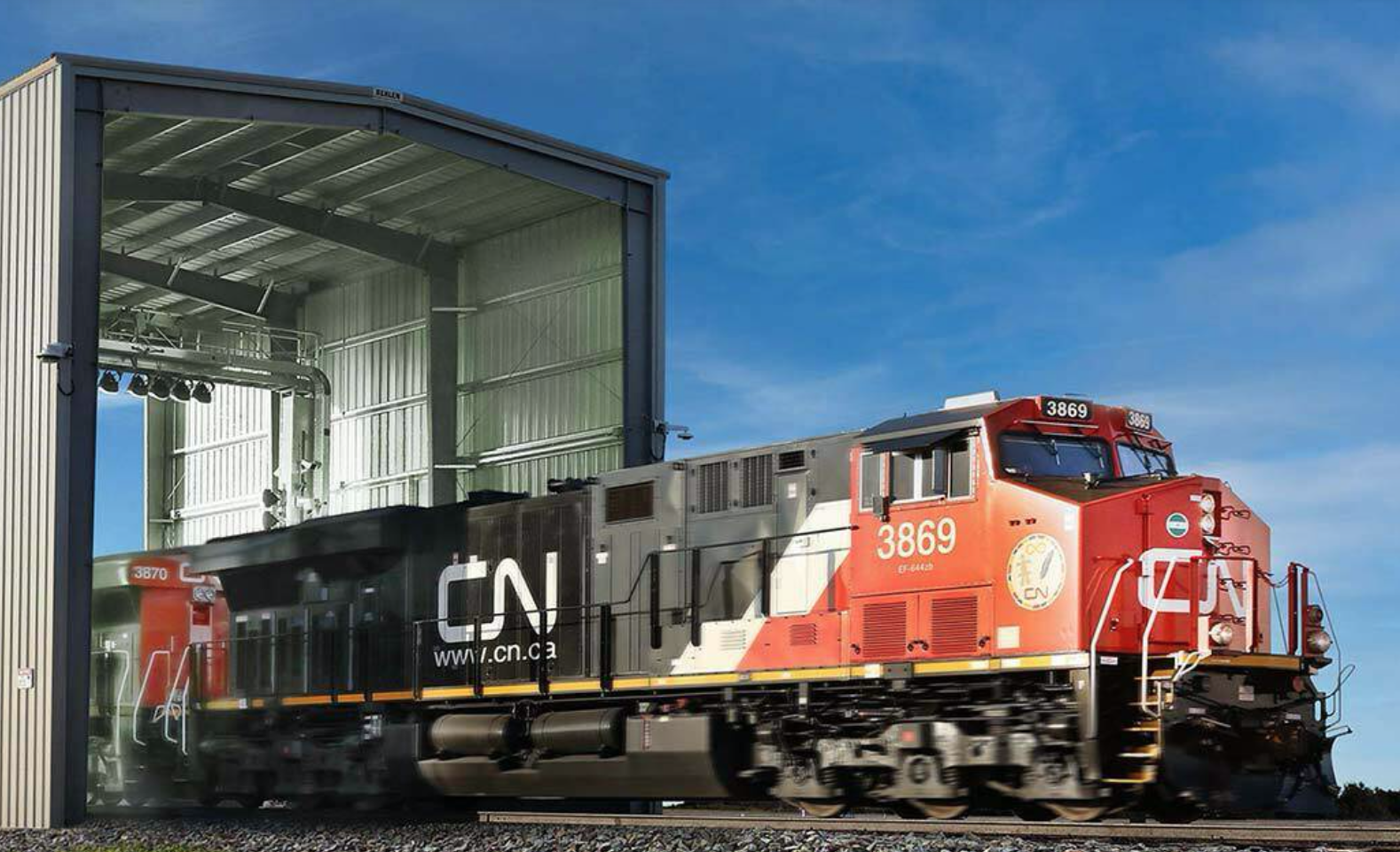Home » CN claims victory over rival railway in bidding war for Kansas City Southern
CN claims victory over rival railway in bidding war for Kansas City Southern
If approved by regulators, $33.6 billion merger would link Canada, U.S., and Mexico as new USMCA trade agreement takes effect.

The bidding war to acquire U.S. freight railway Kansas City Southern (KCS) appears to have been won by Canadian National Inc. (CN), which today announced that its $33.6 billion offer has trumped a competing tender from Canadian Pacific Railway, which had offered $29 billion in March.
By linking its east-and-west rail corridor with KCS’ north-and-south line, the combination would establish a continuous rail network spanning the North American continent and connecting Canada, the U.S., and Mexico just as the new USMCA trade deal begins too displace the previous NAFTA trade agreement.
In a statement today, Montreal-based CN said it had signed a “definitive merger agreement” with both companies’ boards of directors that would “bring together highly complementary networks to benefit customers and enhance competition.”
CN’s argument that its move will actually help freight customers and industry competition is significant because the proposed deal still hinges on approval by government regulators such as the U.S. Surface Transportation Board (STB).
In fact, Canadian Pacific today today said that it will still pursue the STB application for its own bid despite KCS terminating its original merger agreement with CP. According to Canadian Pacific, its version of a merger would sustain a more “pro-competitive” solution and better address the interests of both KCS and the public.
A statement from CN President and CEO JJ Ruest appeared to address concerns that the deal could give the combined railways so much market share that they could squeeze shippers with higher rates. “I would like to thank the numerous stakeholders of both companies who have demonstrated overwhelming support for this compelling combination, and we look forward to delivering the many benefits of this pro-competitive transaction to them,” Ruest said in a release. “I am confident that together with KCS’ experienced and talented team, we will meaningfully connect the continent – enhancing competition, offering more choice for customers, and driving environmental stewardship and shareholder value.”
Likewise, KCS’ president and chief executive officer, Patrick Ottensmeyer, made a similar pitch. “Our companies’ cultures are strongly aligned, and we share a commitment to environmental stewardship, safe operations, reliable service, and outstanding performance,” Ottensmeyer said in a release. “As a larger continental enterprise with complementary routes and an enhanced platform for revenue growth, capital investment, and job creation, we will be positioned to deliver on the transaction’s powerful synergies which will create new growth opportunities for our customers, employees, labor partners, communities and shareholders.”
If the deal is approved, CN said it would maintain its corporate headquarters in Montreal, Canada, and establish Kansas City, Missouri, as the combined company’s United States headquarters. The Mexico headquarters will remain in Mexico City with the operations center in Monterrey. CN also pledged to make “significant infrastructure investments” in communities across the new network, including Illinois, Missouri, Michigan, Louisiana, and Texas.
But the risk of rejection by regulators is real, according to rail industry experts with Baird Equity Research. “Given the need for the deal to serve the public interest and enhance competition, there is considerable risk the STB does not authorize the voting trust structure or approve the CN-KCS combination. The industry’s fundamental outlook remains favorable, but initial DoJ and STB commentary reinforces our view a larger rail M&A wave is unlikely at this time,” Garrett Holland, a Baird senior research analyst, said in a release.
Editor's note: This story was revised on May 21 to include input from Baird.
RailBy linking its east-and-west rail corridor with KCS’ north-and-south line, the combination would establish a continuous rail network spanning the North American continent and connecting Canada, the U.S., and Mexico just as the new USMCA trade deal begins too displace the previous NAFTA trade agreement.
In a statement today, Montreal-based CN said it had signed a “definitive merger agreement” with both companies’ boards of directors that would “bring together highly complementary networks to benefit customers and enhance competition.”
CN’s argument that its move will actually help freight customers and industry competition is significant because the proposed deal still hinges on approval by government regulators such as the U.S. Surface Transportation Board (STB).
In fact, Canadian Pacific today today said that it will still pursue the STB application for its own bid despite KCS terminating its original merger agreement with CP. According to Canadian Pacific, its version of a merger would sustain a more “pro-competitive” solution and better address the interests of both KCS and the public.
A statement from CN President and CEO JJ Ruest appeared to address concerns that the deal could give the combined railways so much market share that they could squeeze shippers with higher rates. “I would like to thank the numerous stakeholders of both companies who have demonstrated overwhelming support for this compelling combination, and we look forward to delivering the many benefits of this pro-competitive transaction to them,” Ruest said in a release. “I am confident that together with KCS’ experienced and talented team, we will meaningfully connect the continent – enhancing competition, offering more choice for customers, and driving environmental stewardship and shareholder value.”
Likewise, KCS’ president and chief executive officer, Patrick Ottensmeyer, made a similar pitch. “Our companies’ cultures are strongly aligned, and we share a commitment to environmental stewardship, safe operations, reliable service, and outstanding performance,” Ottensmeyer said in a release. “As a larger continental enterprise with complementary routes and an enhanced platform for revenue growth, capital investment, and job creation, we will be positioned to deliver on the transaction’s powerful synergies which will create new growth opportunities for our customers, employees, labor partners, communities and shareholders.”
If the deal is approved, CN said it would maintain its corporate headquarters in Montreal, Canada, and establish Kansas City, Missouri, as the combined company’s United States headquarters. The Mexico headquarters will remain in Mexico City with the operations center in Monterrey. CN also pledged to make “significant infrastructure investments” in communities across the new network, including Illinois, Missouri, Michigan, Louisiana, and Texas.
But the risk of rejection by regulators is real, according to rail industry experts with Baird Equity Research. “Given the need for the deal to serve the public interest and enhance competition, there is considerable risk the STB does not authorize the voting trust structure or approve the CN-KCS combination. The industry’s fundamental outlook remains favorable, but initial DoJ and STB commentary reinforces our view a larger rail M&A wave is unlikely at this time,” Garrett Holland, a Baird senior research analyst, said in a release.
Editor's note: This story was revised on May 21 to include input from Baird.
It's official: CN and KCS have entered into a definitive merger agreement to create the premier railway for the 21st century. See more about the agreement and important info: https://t.co/n8kZZvqjoM #ConnectedContinent pic.twitter.com/34JXcG9Fdr
— Canadian National (@CNRailway) May 21, 2021
Related Articles

Ben Ames has spent 20 years as a journalist since starting out as a daily newspaper reporter in Pennsylvania in 1995. From 1999 forward, he has focused on business and technology reporting for a number of trade journals, beginning when he joined Design News and Modern Materials Handling magazines. Ames is author of the trail guide "Hiking Massachusetts" and is a graduate of the Columbia School of Journalism.
Copyright ©2024. All Rights ReservedDesign, CMS, Hosting & Web Development :: ePublishing